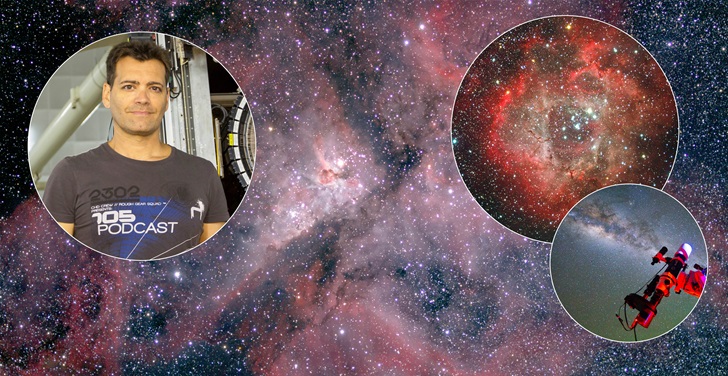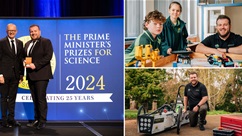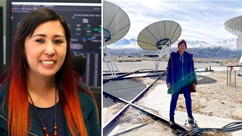KZ: Hi Ángel! Can you share an interesting behind the scenes fact about your job?
Á: The job of an astrophysicist is never boring. One week I’m busy working at night at the telescope, then I spend several weeks teaching at the University, later analyzing data and writing a research paper, after that preparing a science or an outreach talk to present in an event sometimes in the other part of the world!
KZ: What has been the personal highlight of your career so far?
Á: Once I was alone at night observing in a big telescope. I was taking images of a small galaxy that was forming many stars. We didn’t know why. My images showed that it was two tiny galaxies colliding! I was the first person in the world to know it! It was really exciting!
KZ: Are you currently working on any other projects?
Á: My main research project uses the data of big telescopes like the AAT to “dissect” nearby galaxies. I want to understand why these galaxies are forming stars and how chemical elements are cooked inside them. For that I also use data of other Australian facilities, like the Australian Telescope Compact Array (ATCA) near Narrabri (NSW). This powerful array of radio-telescopes allows us to see the cold gas of the Universe using light in radio-waves.
KZ: Did you study any subjects or have any hobbies as a child that gave you skills you use at work?
Á: When I was a kid, I was always asking for books about Astronomy. I’m talking about a time before the internet! I collected everything from magazines to old books. Furthermore, I have always been, and I will always be, an amateur astronomer. That is, I use small telescopes to enjoy the hidden gems in the sky. Even with small telescopes you can see many galaxies, star clusters, nebulae, and stars! Remember that the sky is there and open to everybody. You can be an astronomer too!
Want to read our Ideas Lab interview with Ángel López-Sánchez, and nab his handy beginners guide to observing the night sky? Grab the August 2023 ‘Game Changers’ issue of K-Zone, on sale now!










Comment Now!